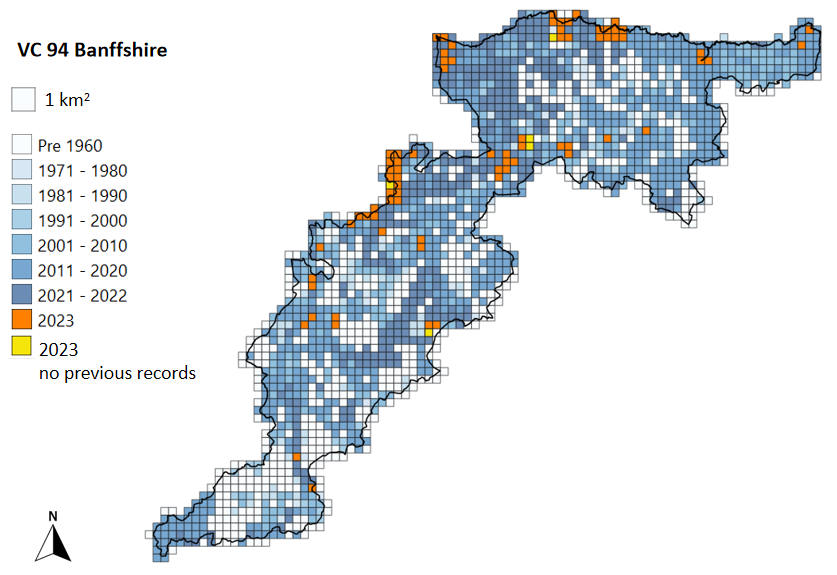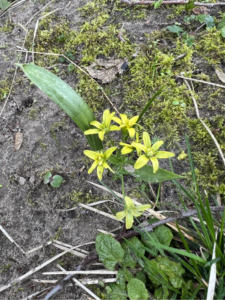2023 County Report for Banffshire
Flora Donald
Sitting down to write this report, I expected to relay a modest number of finds. However, in reviewing the records I realise this expectation was coloured by my own frustration at moving house over the summer curtailing my ability to get out and about and that of course, visiting botanists found exceptional plants again this year.
Coverage:
So far, 2013 records have been submitted for 2023 from 20 different hectads and 88 monads, including five monads with no previous records. An incredible 62% of records reported in 2023 were found by Anne Burgess who visited 34 different monads just this year. An additional 476 records were added to the Ddb from previous years (1983 - 2022).
New records:
Encouragingly, most of the 69 new hectad records were of native species. My particular favourites were Andy Amphlett’s Equisetum × littorale from NJ13 and Myosotis ramosissima from NJ55 found by Anne Burgess.
An early recording start in March led Andy Amphlett to two new vice county records Gagea lutea and Galanthus plicatus subsp. byzantinus, followed in May and June by new vice county records of Lathyrus linifolius var. varifolius, L. linifolius var. montanus and Phacelia tanacetifolia. Tristan Norton then visited in August and recorded vice county firsts of Fumaria purpurea, Trifolium incarnatum subsp. incarnatum and Trifolium alexandrinum. The latter was sown as a crop but is a useful record to compare against any future spread and is only the second finding in Scotland; the first was reported only a fortnight earlier by Ian Green in neighbouring vc95.
SHARPP:
With great optimism and improving weather conditions, Anne Burgess and I headed out to the Wood of Edinvillie armed with eight very detailed grid references of Linnaea borealis recorded in 1998. We searched the area diligently and enjoyed updating the inventory with 49 new taxa for the tetrad, but were sadly unable to locate a single twinflower patch. Even suspecting inaccuracies in the original grid references, we think the habitat has changed and may no longer be favourable for this delicate rarity.

